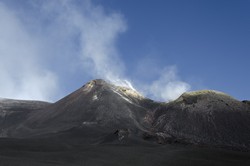Better observation and monitoring of Mediterranean volcanoes
More than 3 million people are exposed to potential volcanic hazards near the Mt Etna and Campi Flegrei/Mt Vesuvius volcanoes in the Mediterranean region. The wide range of styles and intensities of volcanic phenomena observed on these volcanoes present an opportunity to improve understanding of geohazards. The EU-funded MED-SUV(opens in new window) (MEDiterranean SUpersite Volcanoes) initiative worked to optimise existing monitoring systems such as Earth Observations (EO) for volcanic processes. The researchers explored the Mt Etna and Campi Flegrei/Vesuvius volcanoes and their potential effects on the Mediterranean Sea area. The team developed observation methods that allowed them to integrate EO and in situ data, and digital infrastructure for sharing data. MED-SUV identified the parameters relevant to internal processes in the volcanoes to characterise the surface volcanic processes during eruptions. The team carried out in field and laboratory experiments such as the TOMO-ETNA seismic survey and geochemical and geophysical prospecting at Solfatara (Campi Flegrei). MED-SUV then tested the products developed in the project on Campi Flegrei/Mt Vesuvius and Mt Etna, as well as on other volcanic systems with similar behaviours. Project researchers developed a data policy on how the data and scientific and technological products could be used and shared. They developed the infrastructure needed to manage variable data sources and created a web portal(opens in new window) for easy access to the system and the data. Project partners developed an improved method to process synthetic aperture radar data to detect and monitor ground deformation. They also integrated EO and in situ data using data validation, data merging and mathematical models. These results will have an important impact on the European industrial sector by integrating the scientific community and small and medium-sized enterprises for better observation systems. Dissemination products, such as policy briefs, leaflets and the project video, are available at online(opens in new window).







